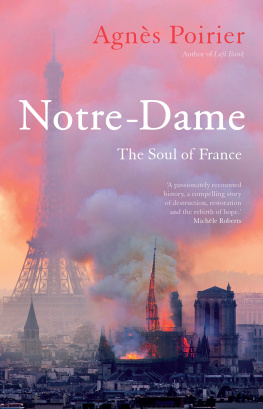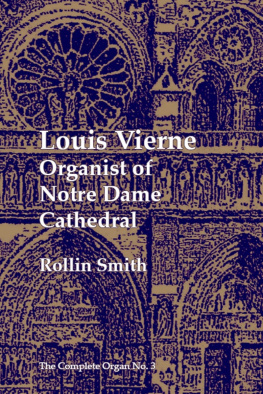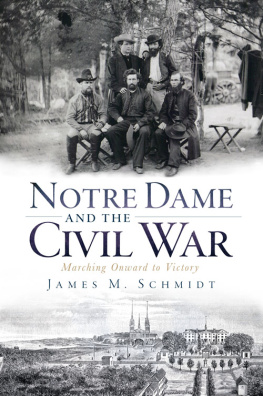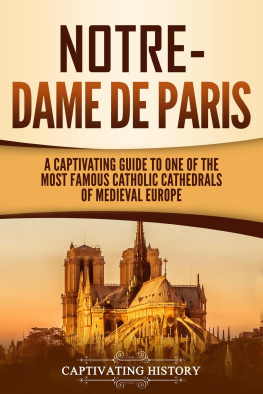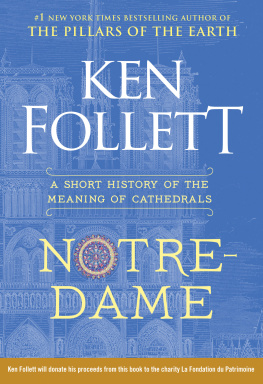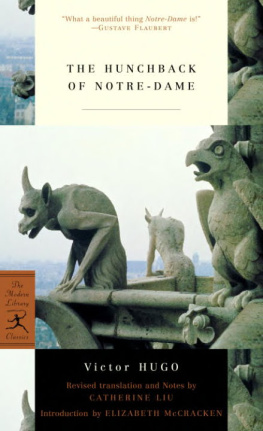Library of Congress Cataloging-in-Publication Data
Names: Sandron, Dany, author. | Tallon, Andrew, 19692018, author. | Cook, Lindsay (Lindsay Shepherd), translator.
Title: Notre-Dame of Paris : nine centuries of history / written by Dany Sandron and Andrew Tallon ; translated by Lindsay Cook.
Other titles: Notre-Dame de Paris. English
Description: University Park, Pennsylvania : The Pennsylvania State University Press, [2020] | Includes bibliographical references and index. | Summary: A visual survey of the cathedral of Notre Dame in Paris over the past 850 years. Addresses a series of key themes in the cathedrals history, including the fundraising campaign, the construction of vaults, and the liturgical function of the choirProvided by publisher.
Identifiers: LCCN 2019040791 | ISBN 9780271086224 (paperback)
Subjects: LCSH: Notre-Dame de Paris (Cathedral)History. | Church architectureFranceParisHistory. | Architecture, GothicFranceParis. | Church decoration and ornamentFranceParisHistory. | Paris (France)Buildings, structures, etc.
Classification: LCC NA5550.N7 S2613 2020 | DDC 726.50944/361dc23
LC record available at https://lccn.loc.gov/2019040791
Notre-Dame de Paris: Neuf sicles dhistoire
Dany Sandron / Andrew Tallon
Copyright Editions Parigramme, 2013 Paris, France
English translation The Pennsylvania State University
All rights reserved
Printed in Turkey
Published by The Pennsylvania State University Press,
University Park, PA 168021003
The Pennsylvania State University Press is a member of the Association of University Presses.
It is the policy of The Pennsylvania State University Press to use acid-free paper. Publications on uncoated stock satisfy the minimum requirements of American National Standard for Information SciencesPermanence of Paper for Printed Library Material, ANSI Z 39.481992.
Published in memory of Andrew Tallon (19692018), who gave so much to Notre Dame and whose work will guide its future restoration.
CONTENTS
Notre Dame in Paris is the Gothic cathedral par excellence. It had an immediate impact because its architecture represented a challenge in the second half of the twelfth century. Perhaps this is hardly surprising, given its ties to people in high places and its geographic location in the heart of a city that was fully becoming the capital of the kingdom of France.
The construction of an edifice as immense as Notre Dame came at a high point for the episcopacy in the history of the Church. Bishop Maurice de Sully, who launched the campaign, exemplified the ideal prelate of the period: at once an eminent intellectual and an effective administrator. He ably coordinated the efforts within the diocese he oversaw to have a bold monument constructed; the project reflected the clergys ambition to blend in with all levels of society to realize its essential mission as spiritual guide to a society for whose salvation it was responsible.
In Paris, the situation was unique due to the proximity, both literal and figurative, of the king. From his palace situated at the opposite end of the le de la Cit, the sovereign could easily visit Notre Dame. In a society in which ritual played a crucial role, Notre Dame was the site of important royal ceremonies: during his first entrance into Paris, even before going to his own palace, the king would go to Notre Dame to confirm his protection of the cathedral clergy. It was also in the cathedral of Paris that a wake would take place the night before a royal burial. As such, Notre Dame shared with the cathedral of Reims (the royal coronation church) and the abbey church of Saint-Denis (the royal necropolis) the status of sanctuaries favored by the monarchy.
Contemporaneous events attest, however laconically, to the cathedrals construction. In 1179, in the great hall of the episcopal palace, Prince Philipthe future King Philip II Augustuswas designated the successor to his father, Louis VII, at that point gravely ill, by acclamation of the important figures in the kingdom. As early as 1190, it was in the new choir that Philips wife, Queen Isabelle of Hainaut, was buried. Joining her in 1218 was the young prince Philip, the eldest son of Louis VIII and Blanche of Castile, leaving the throne open for his younger brother Louis IX (r.



